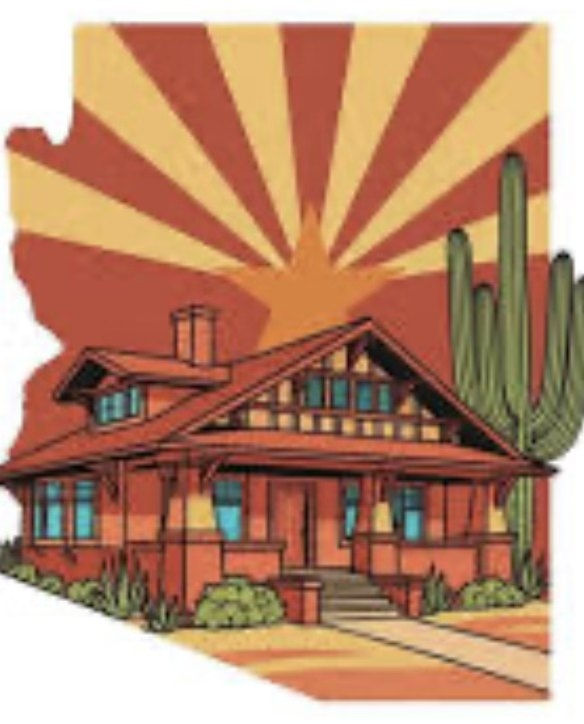Celebrating Asian American and Pacific Islander History in Arizona
- Alesha Adolph

- Jul 28, 2022
- 3 min read
Santa Rita Shrine in Vail

“The Shrine of Santa Rita in the Desert was built in 1935 in memory of Dr. Jokichi Takamine (1854-1922) by his widow, Caroline Takamine Beach. It is the only Catholic Church in the United States built in memory of a Japanese citizen” (Vail Preservation Society, 2021). The couple spent years together in Japan and New York. Dr. Takamine was a famous Japanese chemist. His focus was on agriculture and finding new ways to improve the growth and productivity of crops. While visiting the United States for the Cotton Exposition in New Orleans in 1884, he met his future wife Caroline (Takabio, n.d.).

Over the years Takamine developed many scientific breakthroughs such as a wheat bran enzyme and adrenaline in crystalline form and started a few companies including Sankyo Pharmaceutical. He also founded the Japanese Society of New York (Takabio, n.d.). He devoted himself to his work and to improving Japanese American relations. Takamine was instrumental in bringing the gift of 3,000 cherry trees to be planted along the Potomac River in Washington D.C. The trees were donated in honor of First Lady Helen Taft who wanted to enhance the banks of the Potomac River basin and to commemorate the Hudson-Fulton Celebration (Shurtleff & Aoyagi, 2012).
Takamine died in 1922 from chronic nephritis, a kidney disease. A full-column obituary was printed in the New York Times. He was buried in the Woodlawn Cemetery in Bronx, New York. Several years after his passing, Caroline travelled to Vail to visit their son Eben Takamine. Eben introduced her to Charles Beach, a rancher in the Santa Rita Mountains south of Vail. They fell in love, so she moved to Vail and remarried in 1926. She was determined to build a church for the people of Vail. The process took several years. In 1935, the Shrine of Santa Rita in the Desert was completed and dedicated to her late husband. At least 650 guests from around the world attended the March 31st event. The Shrine was added to the National Register of Historic Places in 2014. It stands today as a symbol of friendship between Japan and the United States.
Sources:
Takabio. (n.d.). His life in full. Jokichi Takamine . Retrieved July 18, 2022, from https://www.jokichi-takamine.com/index.php/who-is-doctor-takamine/long-biography/life-in-full
Vail Preservation Society. (2021). Shrine of Santa Rita in the Desert. Vail Preservation Society. Retrieved July 18, 2022, from https://vailpreservationsociety.org/gallery/vail-2/
Shurtleff, W., & Aoyagi, A. (2012). Jokichi Takamine (1854-1922) and Caroline Hitch Takamine (1866-1954): Biography and Bibliography. Soyinfo Center.
Flower Farms in Phoenix

“As early as 1905, Japanese immigrants moved to Arizona with the intent to farm the land” (Morrison, 2020). They planned to grow sugar beets, but beets did not grow well in the heat. New farmers continued to come. Kajuro Kishiyama and his family farmed vegetables and became known as the “Tomato King.” A few years later, the Nakagawa’s started a flower farm across the street. The land was great, and they were successful in their flower fields. “In 1942, their lives were abruptly interrupted by Executive Order 9066, which forced Japanese Americans to sell or abandon their land and possessions and report to a government internment camp. The Kishiyamas, Nakagawas, and other local Japanese Americans were interned in the Gila River Internment Camp in southern Arizona” (Morrison, 2020).
The families were eventually released and returned to start again. Through hard work and dedication they were able to continue to grow and thrive in their flower farms for about thirty more years. Tourists travelled from all over to come to see the blossoms and colorful fields during the 60s and 70s. At one point the Nakagawa family put in a tower for tourists to better view the farms. It would get so busy that they would bring in traffic control.
Baseline Flowers was established in the 1950s by Hiroshi “Nick” Nakagawa. It is a family-owned business which started with their flower farm in Phoenix. They are now the last remaining flower shop of that era. They are a full-service florist and gift shop and hand-deliver premium floral arrangements (Nakagawa, n.d.). There are now suburban housing developments where the fields once were, but Baseline Flowers still stands and is happy to share their history.
Sources:
Morrison, B. (2020). The Japanese Flower Gardens of Phoenix. Arizona Historical Society. Retrieved July 21, 2022, from https://arizonahistoricalsociety.org/2021/05/10/the-japanese-flower-gardens-of-phoenix/
Nakagawa. (n.d.). About Us. Baseline Flowers. Retrieved July 21, 2022, from https://baselineflowers.com/about-us
For more information on Asian American and Pacific Islander history in Arizona, check out:




Comments